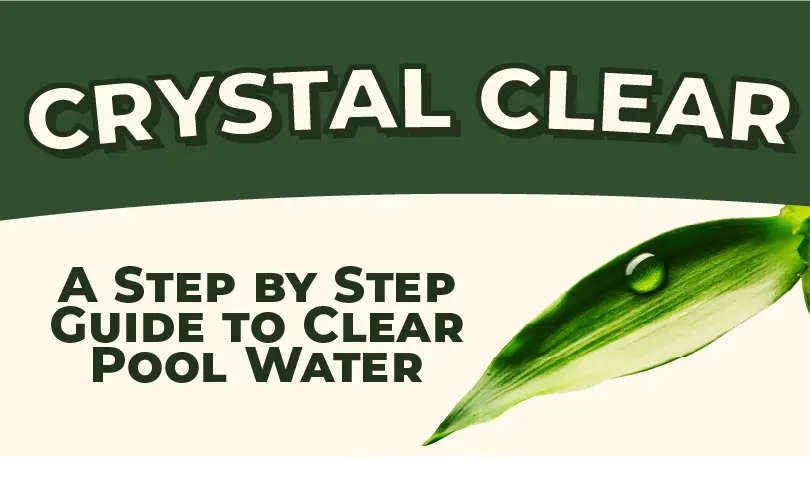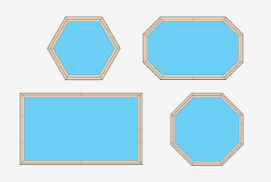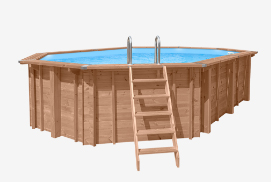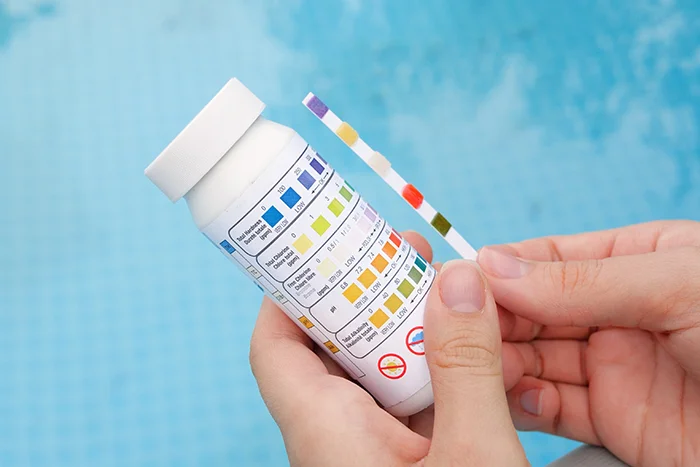Maintaining clean and clear pool water is essential for an enjoyable swimming experience, whether you’re splashing around in a garden pool on a hot summer day or enjoying a covered pool year-round. Here’s a comprehensive guide on how to achieve and maintain crystal-clear pool water by following a step-by-step process of chemical treatment and maintenance.

Step 1: Balance the Water – pH Regulation1
The pH level of your pool water is crucial for both the comfort of swimmers and the effectiveness of the chemicals used. A balanced pH (7.0-7.4) prevents skin irritation, maintains the efficacy of chlorine, and protects the pool’s infrastructure from corrosion or scaling.
Too high pH
Can lead to scaling and reduce the effectiveness of chlorine.
Too low pH
Can cause corrosion of pool components and irritation to swimmers.
Action
- Regularly test the pH levels of the water, ideally once a week.
- Adjust the pH using pH increasers or decreasers to maintain it within the optimal range.
Step 2: Disinfect the Water
Chlorine Method
Chlorine is the most common method for disinfecting pool water. It effectively kills bacteria, viruses, and algae by reacting with organic contaminants.
The amount of chlorine needed varies depending on pool usage, weather, and other factors.
Ideal Chlorine Level
Maintain free chlorine levels between 0.3 and 0.5 mg/L.
Benefits
- High active chlorine content.
- Fully dissolves without residue.
- Includes stabilizers to reduce chlorine loss due to sunlight.
Oxygen Method
An alternative to chlorine is the use of active oxygen compounds. This method also oxidizes contaminants but has a shorter-lasting effect compared to chlorine.
Benefits
- No unpleasant odors.
- Gentle on skin and eyes.
- Does not dry out skin or damage hair.
Step 3: Algae and Bacteria Prevention
Algae can proliferate rapidly in pools, creating slippery surfaces and discolored water. To prevent this use products such as algaecides to effectively prevent algae growth. It ensures pool remains clear and reduces chlorine consumption.
Action
Apply algaecide according to product instructions, typically once a week or after heavy rainfall.
Step 4: Flocculation
Filters can only remove particles of a certain size from the water. Flocculation helps by clumping smaller particles together, making them large enough to be filtered out. Use flocculant products (like cartridges) for ongoing flocculation.
Benefits
Maintains water clarity by removing microscopic particles that cause cloudiness.
Action
Apply flocculant weekly to maintain crystal-clear water, especially if using a sand filter.
Step 5: Filtration
Even with proper chemical treatment, the water can become cloudy if the pool filter is dirty. Filters can harbor bacteria and other contaminants. Use products such as Decalcit Filter or FilterShock to clean and disinfect the filter.
Action
Regularly backwash sand filters and replace cartridge filters as needed. Clean filters according to the manufacturer’s instructions and ensure proper filtration to keep the pool water clean.
Conclusion
By following these five steps, you can maintain crystal-clear and safe pool water. Regular testing, balancing, disinfecting, algae prevention, flocculation, and filter maintenance are key to an enjoyable and hygienic swimming environment. Invest time in these practices to ensure your pool remains a haven for relaxation and fun.














